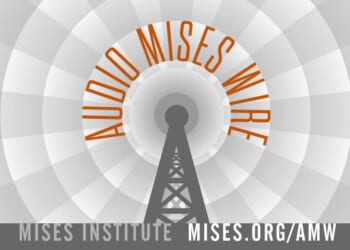There’s a particular story of Jewish fear in the modern era that has stuck with me ever since I read about it. After the post-October 7 revelations of the mistreatment of Jewish patients in British hospitals, this account of an Israeli mother-to-be’s anxiety over giving birth in London cannot be dismissed. Neither can it be resolved—there is no way to ensure that what has happened won’t continue happening, and for this expectant mother that means putting her child’s life in the hands of people she cannot trust.
In some ways, Jewish medical fears are mundane, as she writes: “I worry if I should disclose my ethnicity when I arrive at hospital, and will I be free to speak in Hebrew? I feel comfortable talking English, but in situations where I’m not in control and am in pain, my default is my mother tongue… No woman should have to go through the labor with these thoughts in her head.”
And in other ways, those fears are impossible to fully disentangle from the 20th century’s horrors, which included unspeakably grotesque medical persecution.
But either way, those fears aren’t new. Even the more mundane questions of basic care and treatment in a hospital have been around, in the West, for a century.
Right here in America, in fact.
As I was reading professor Pamela Nadell’s new book, Antisemitism, An American Tradition, over the weekend, I stumbled on one line: “Jewish doctors were not the only ones targeted. Brooklyn’s Rabbi Louis Gross knew that Jewish patients encountered prejudice, discrimination, and ill-treatment when they sought medical care there.”
The “there” was Kings County Hospital about a hundred years ago. Nadell’s book, a worthy and timely addition to the literature on American anti-Semitism, is an overview of the country’s history and so the concentration in each era is on representative examples. And the example in this section was a hazing incident at Kings County:
“In the wee hours of the morning of June 20, 1927, three Jewish doctors were asleep when fellow interns ambushed them and tied them up. The interns dragged the Jewish doctors to the bathroom and began plunging them in tubs of freezing water, holding down their heads until the captives thought they might drown. The interns then hauled the three back to their rooms, tied them to their bedposts, and drenched them in black shoe polish.”
It was the culmination of a series of hazing incidents against the Jews at Kings County, and it finally triggered a criminal investigation. The hazers were reinstated after apologizing and the hazing charges were dropped by the Jewish doctors.
But it opened a can of worms. The investigation into the hazing led to other revelations. I followed the footnote into the annals of local Brooklyn newspapers at the time and it turned out that the broad accusations of anti-Semitism against the hospital in 1927 included the hazing but also a litany of other borderline-malpractice examples aimed at undermining Jewish doctors.
In one case, a child was being treated for lung inflammation by a Dr. Zwiefler, who discovered an infection that made her condition critical. Zwiefler turned her over to the surgical ward but surgeons were unable to save her. The hospital superintendent initially assumed Zwiefler himself performed the surgery during which the patient died. He called Zwiefler to let him know that the doctor’s supposed “faulty technique” would be listed as the cause of death. When he found out Zwiefler wasn’t the surgeon, the medical record was changed to protect the (non-Jewish) surgeon and list the death as due to natural causes. Zwiefler’s signature had been forged on the new form.
It soon became clear that patients were bearing the brunt of the effects of the anti-Semitism at the hospital. A Dr. Borow testified that a non-Jewish doctor in an adjacent ward would come into his area, scratch out the orders Borow had put on his patients’ forms, and change their medications. Another time, that doctor had discharged a Jewish patient of Borow’s against Borow’s orders. When he objected, a nurse yelled out “All Jews should be isolated! They should not be allowed to come here at all!”
A mayoral commission turned up testimony that such mistreatment was fairly common. For example, when Jewish doctors were paged for Jewish patients at Kings County, operators would reportedly refuse to put the page through, leaving the doctor unaware that he was needed.
In one case, according to the Brooklyn Citizen, “a Jewish woman was admitted to the hospital in a coma suffering from a severe case of diabetes.” A nurse tried to page a Dr. Katskee, but the operator apparently stymied it. Two hours later, Katskee walked into the ward and saw the patient, whom he didn’t know had even been admitted. The nurse told him she’d been trying to page him for two hours. The patient died an hour later.
The investigation turned up many similar cases. In the case of Kings County, the mayor got directly involved. But in how many other instances was it possible to get such mainstream attention to the problem? If this was happening in New York City, where else was it happening?
Further, these descriptions of anti-Jewish prejudice could easily be applied to what’s happening in the UK, where doctors have become far more open about their anti-Semitism than even the Brooklyn figures quoted above.
So where does that leave us? We’re far beyond the point where anybody can credibly accuse nervous Jewish patients of being dramatic or paranoid; in all likelihood, they are probably understating the degree of anti-Jewish rot in the medical world. Experience teaches us that Jews in the West are once again entering an era where vigilance is required in daily life.


















